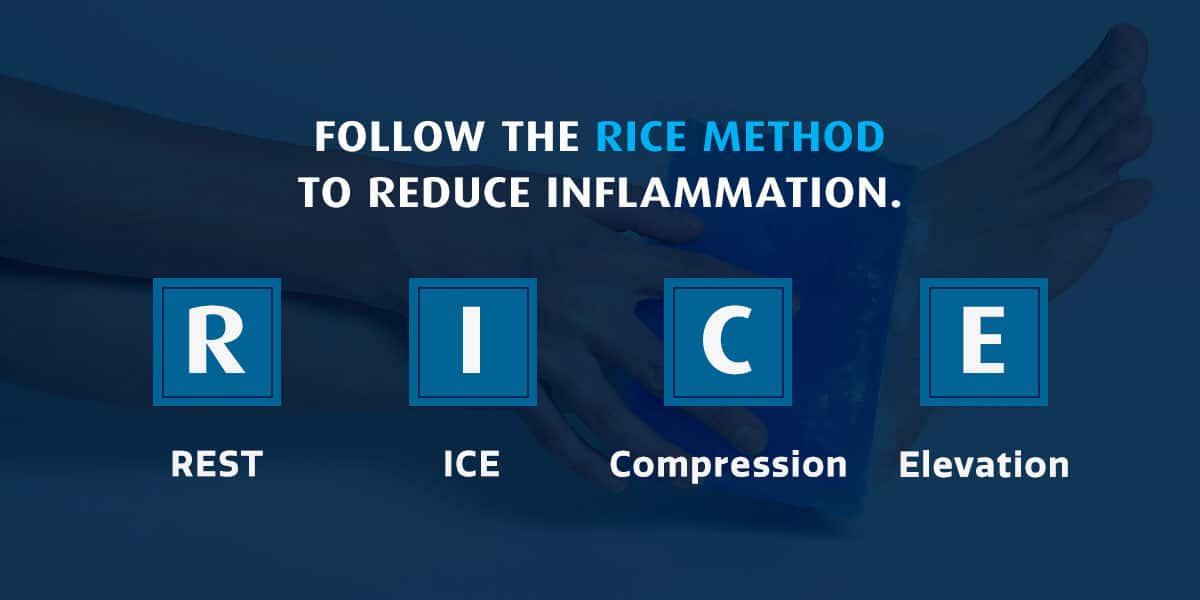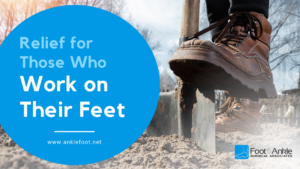
While many people use the terms “sprain,” “strain” and “tear” interchangeably, they are not the same conditions. Each injury can have separate causes, symptoms and treatments. If you’re unsure where your pain is coming from or how to find relief, it can help to learn the difference between these diagnoses.
What Is a Sprain?
A sprain occurs when you tear or stretch a ligament, which is the fibrous connective tissue that connects and stabilizes your bones. Sprains result from forcing a joint like your ankle, wrist or knee into an unnatural position. Ligament injuries outside the ankle happen when the ankle twists outward and the foot twists inward. In contrast, inner ankle sprains result from rocking the ankle inward and turning the foot outward.
While symptoms of a sprain vs. strain are very familiar, one difference is that a sprain might cause a popping or tearing sensation in the joint as it occurs, while strains often result in spasms or cramping in the affected muscle.
Other sprained ankle symptoms include:
- Inflammation or swelling
- Bruising and tenderness
- Mild or severe joint or muscle pain
- Loss of range of motion
- Stiff or unstable joint
Ankle Sprain Recovery Time and Treatments
Treating an ankle sprain involves reducing the swelling and pain from the injury. Excessive swelling can lessen your tendons’, muscles’ and ligaments’ flexibility, making you more prone to future injuries. Follow the RICE method to reduce inflammation.

- Rest: For severe pain and swelling, rest your ankle within the first 24 to 48 hours after the injury.
- Ice: While resting your ankle, immerse it in cold water or apply an ice pack wrapped in a towel to protect your skin. Do this for up to 20 minutes, three times a day, or until swelling subsides.
- Compression: You can also reduce swelling by compressing your ankle with elasticized wrap like a sleeve or bandage.
- Elevation: When seated, elevate your ankle as high as you comfortably can, at least to hip height.
During the first 24 hours, avoid doing anything that could increase swelling, such as using hot packs or taking hot showers. You can also take over-the-counter medications to aid your recovery. Ankle sprain recovery time will vary depending on the injury’s severity. Mild sprains can take over a week to heal, while severe sprains may take several weeks to get better.
Consider seeing your health provider for a splint or a cast to prevent further injury.
What Is a Strain?
A strain occurs when you tear or overstretch a muscle or tendon. You might experience this injury from a single incident or due to long-term, repetitive movements. Athletes in contact sports like football and boxing have a high chance of experiencing strains, but your daily workouts can also lead to strains, especially from heavy lifting.
Like sprains, strain symptoms can vary in severity. These may include:
- Swelling
- Muscle spasms
- Cramping
- Weakness
- Immobility
- Pain and bruising
- Limited range of motion
Strain Injury Treatments and Recovery
Like a sprain, mild to moderate strains can heal within a few weeks using the RICE method. If you have severe swelling and difficulty moving, consider seeing a doctor for treatment. Professionals can do X-rays to ensure you don’t have a fracture or an MRI to assess your ligaments. Here are some potential treatments for a strain injury.
- RICE method: Get plenty of rest, apply ice and compression and elevate your injured ankle after a sprain. In most cases, you can quickly recover following the RICE regimen.
- Cast or crutches: A cast or crutches can help you get around while your ankle heals and prevent further injury to the area.
- Surgery: In severe cases, surgeons can repair torn ligaments or tendons to get you on the road to recovery.
- Physical therapy: Physical therapy exercises can also treat strained ankles for an effective recovery.
What Is a Tear?
A tear is when the fibrous tissue in a ligament, muscle or tendon rips. These injuries can occur from the same activities that cause strains and sprains, though they are more severe and take much longer to heal. An example of an incident that may lead to a tear is falling on slippery steps and rupturing the quad tendons.
Tear symptoms can include:
- Severe inflammation
- Swelling
- Bruising
- Redness or bleeding at the injury site
- Inability to use the muscle
- Pain or weakness when using the affected muscle or joint
Ankle Ligament Tear Treatments and Recovery Time
Typically, the more severe a tear, the worse the inflammation and pain will be, and the longer you will need to recover. Some conservative treatments like RICE might aid recovery, while more severe injuries like a torn ACL might require surgery. In these cases, surgeons reconstruct and repair the ligament to promote healing.
Here are common treatments for ankle tears:
- RICE method
- Over-the-counter medication to manage pain
- Surgery and physical therapy
See your doctor if the injury is significant or if home care doesn’t provide relief within 24 hours.
Book an Appointment With a Podiatrist at Foot & Ankle Surgical Associates
Sprains, strains and tears can happen to any physically active person. In most cases, rest, ice, compression, elevation and pain medication can deliver relief, though some injuries might require medical attention or surgery. If you experience swelling and pain that hinders your movement, the dedicated staff at Foot & Ankle Surgical Associates is here to help you heal.
Our qualified podiatrists can provide an official diagnosis, evaluate your symptoms and determine the source of the pain. We can diagnose a sprain, strain or tear and injury’s severity with a physical exam and X-rays. From there, we can provide appropriate treatments to get you back on your feet.
To book an appointment, call us at 360-754-3338 or fill out our online form today.





